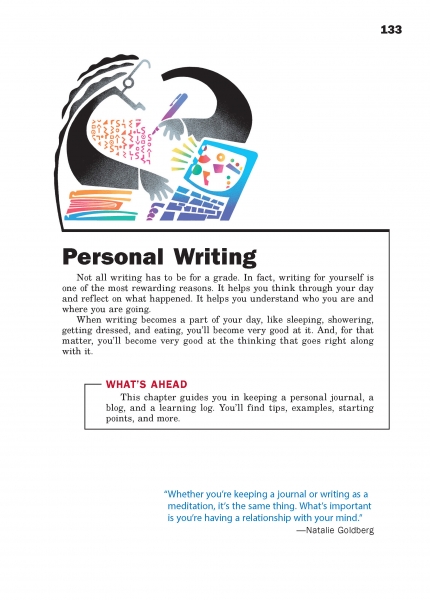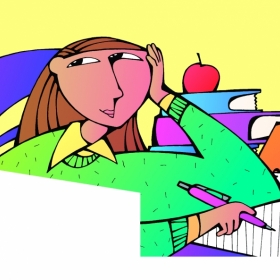Page 133 from

Start-Up Activity
Share the "Think About It" quote from Franz Kafka. Let your students know Kafka's advice gets to the heart of what personal writing offers— a space to "follow your most intense obsessions mercilessly." Give them a moment to freewrite about something that is weighing on their mind.
Afterward, discuss the value of writing for oneself rather than a grade. Personal writing provides students space to explore what they are thinking and why. It scratches an internal itch, helping them work through an idea, interest, experience, or concept of heightened importance. Practiced regularly, it improves students' thinking, fluency, and confidence as writers. Therefore, we recommend scheduling weekly class time for personal, ungraded writing.
Think About It
“Don’t bend; don’t water it down; don’t try to make it logical; don’t edit your own soul according to the fashion. Rather, follow your most intense obsessions mercilessly.”
—Franz Kafka

Start-Up Activity
Share the "Think About It" quote from Franz Kafka. Let your students know Kafka's advice gets to the heart of what personal writing offers— a space to "follow your most intense obsessions mercilessly." Give them a moment to freewrite about something that is weighing on their mind.
Afterward, discuss the value of writing for oneself rather than a grade. Personal writing provides students space to explore what they are thinking and why. It scratches an internal itch, helping them work through an idea, interest, experience, or concept of heightened importance. Practiced regularly, it improves students' thinking, fluency, and confidence as writers. Therefore, we recommend scheduling weekly class time for personal, ungraded writing.
Think About It
“Don’t bend; don’t water it down; don’t try to make it logical; don’t edit your own soul according to the fashion. Rather, follow your most intense obsessions mercilessly.”
—Franz Kafka




